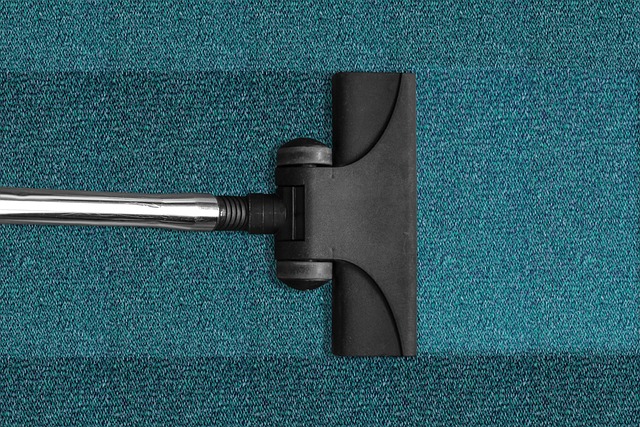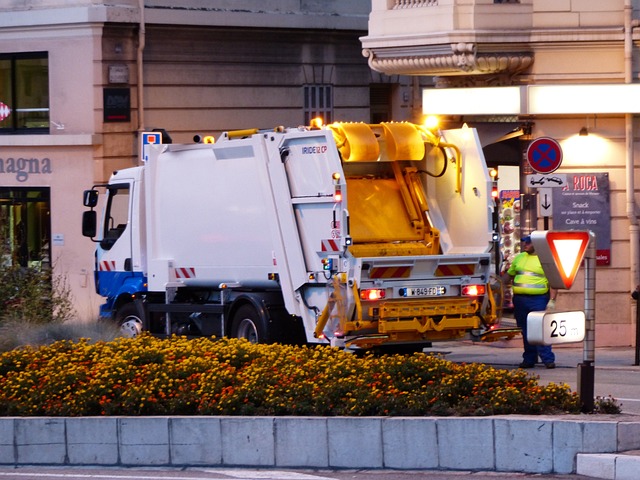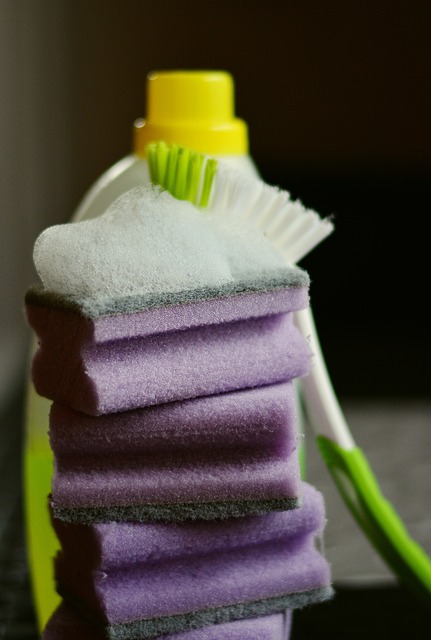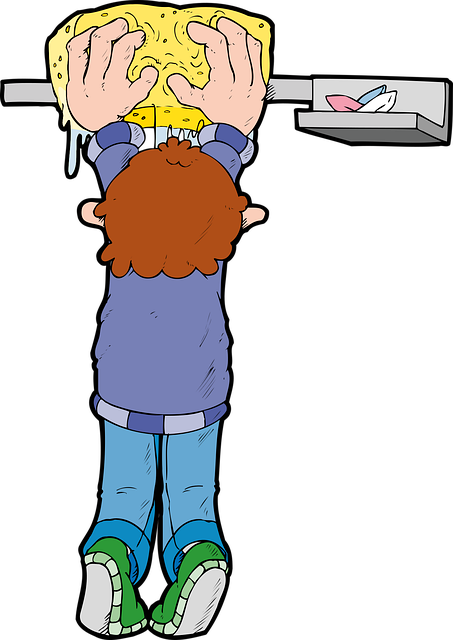Pet stain cleaning requires understanding different types of stains, using specific methods for various surfaces, and employing effective odor removal techniques. While harsh chemicals are replaced by natural, plant-based solutions, professional help is available for stubborn cases. Regular grooming, immediate spot cleaning, and pet-friendly products prevent stains. Enzymatic cleaners target organic compounds, while essential oils provide antimicrobial benefits. Tailored approaches ensure a clean, hygienic space, with professional services offering superior results.
“Uncover expert pet stain cleaning secrets to keep your home fresh and spotless! This comprehensive guide tackles the common challenges of pet messes, from understanding stubborn stain types and their causes to mastering effective odor removal techniques. Learn about natural, eco-friendly solutions, surface-specific cleaning approaches, and when to seek professional help. Discover maintenance tips for a perpetually pristine space, ensuring your home remains a haven of cleanliness, even with furry friends in tow.”
Understanding Pet Stains: Types and Causes

Pet stains can range from adorable little accidents to persistent, hard-to-remove marks that leave your carpets and upholstery looking less than pristine. Understanding the types and causes of these stains is the first step in effective pet stain cleaning. Common culprits include urine, feces, vomit, and paw tracks, each with its unique composition and level of difficulty when it comes to removal.
Urine stains, for instance, often leave a pungent odor due to the presence of ammonia, while fecal matter can introduce bacteria and parasites if not addressed promptly. Paw tracks, on the other hand, may simply be muddy or carry grass and debris, requiring different cleaning approaches depending on the material affected—carpet, wood flooring, or tile. Regular grooming, spot cleaning accidents immediately, and using pet-friendly products are key preventive measures for maintaining a clean environment with furry companions.
The Science Behind Odor Removal

Odor removal is a fascinating science, especially when it comes to tackling stubborn pet stains and odors. The human nose is incredibly sensitive, capable of detecting even trace amounts of certain scents. This sensitivity makes eliminating odors effectively a complex process. Professional cleaning solutions employ advanced chemicals that target and break down odour-causing molecules at a molecular level. These chemicals can neutralize volatile organic compounds (VOCs) and break apart protein and lipid chains that often lead to pet stains and their accompanying smells.
In the case of pet stain cleaning, enzymes play a crucial role in the process. Enzymes are natural catalysts that speed up chemical reactions, specifically breaking down complex molecules like those found in urine or fecal matter into simpler substances. This enzymatic action not only removes the visible stain but also eliminates the odor at its source, ensuring a deeper clean and fresh-smelling environment.
Effective Cleaning Products and Techniques for Pet Stains

When it comes to pet stain cleaning, using the right products and techniques is crucial for effective removal and preventing odours from returning. Start with high-quality pet stain cleaners that are designed to break down organic compounds and eliminate odours at their source. Enzymatic cleaners, for instance, are known for their ability to digest proteins in pet stains, making them a popular choice for tough cases. Always test the product on a small, inconspicuous area first to ensure it won’t cause any damage or discolouration.
In addition to specialised cleaners, consider incorporating natural cleaning agents like baking soda and vinegar into your pet stain cleaning routine. Baking soda is an excellent odour neutraliser, while vinegar can help cut through grease and grime. Combining these ingredients with warm water creates a powerful yet gentle cleaning solution that’s safe for most surfaces. For stubborn stains, don’t hesitate to apply the cleaner liberally and let it sit for several minutes before scrubbing gently with a soft-bristled brush. Rinse thoroughly and dry completely to prevent any residual moisture from causing further damage or odour issues.
Natural and Eco-Friendly Solutions for Stain and Odor Elimination

In today’s eco-conscious world, many homeowners are seeking natural and eco-friendly solutions for stain and odor elimination, especially when it comes to pet stain cleaning. Traditional cleaning products often contain harsh chemicals that can be detrimental to both health and the environment. Fortunately, there are several powerful yet gentle alternatives derived from nature that are effective in tackling tough stains and odors without compromising safety or sustainability.
Plant-based enzymes, for instance, have become popular choices for pet stain cleaning due to their ability to break down organic matter naturally. These enzymes can be found in products made from ingredients like bamboo, lemon, or pineapple enzymes, which safely remove pet messes while leaving no toxic residue. Additionally, essential oils not only freshen the air with their delightful scents but also possess antimicrobial properties that help eliminate odors at their source. Opting for these natural solutions allows homeowners to maintain a clean and healthy living environment without contributing to chemical pollution.
Dealing with Stains on Different Surfaces

When it comes to stain removal, different surfaces require tailored approaches. For instance, treating a pet stain on carpeting demands a specific set of steps compared to cleaning a similar mark from hardwood floors or walls. Pet accidents can leave behind organic compounds that necessitate enzymatic cleaners for effective removal. These specialized products break down the stains at a molecular level, ensuring they don’t re-emerge.
For hard, non-porous surfaces like countertops or tiles, mild bleach solutions or commercial stone cleaners are often sufficient. On the other hand, delicate fabrics may require dry cleaning to preserve their integrity while removing stubborn odors and marks. Understanding the material and the type of stain is crucial for successful cleaning, leading to a refreshed and stain-free environment.
Professional Help: When to Hire a Specialist

Professional help is often the best course of action when dealing with stubborn stains and odors, especially in cases of pet mishaps. While DIY methods can be effective for minor issues, specialized cleaning services bring a host of benefits for more challenging situations. These include advanced equipment and eco-friendly products that are safe for both your home and pets.
Hiring a specialist is particularly crucial when dealing with pet stains and odors. Pets, with their playful nature, can leave behind difficult-to-remove marks and unpleasant smells. Professional cleaners have the expertise to tackle these issues head-on, ensuring that not only are the visible stains removed but the underlying odors are also eliminated. This specialized knowledge and experience means they can offer tailored solutions, treating each case individually to deliver optimal results.
Maintenance and Prevention Tips for a Clean Home

Maintaining a clean home, especially when it comes to managing stains and odors, is a continuous effort that involves both regular cleaning practices and proactive prevention strategies. A well-kept house not only looks appealing but also creates a healthier living environment. One of the significant aspects of home maintenance is addressing pet stains, as furry companions can bring immense joy but also contribute to messy accidents.
Implementing simple yet effective tips can make Pet Stain Cleaning more manageable. Regularly cleaning high-traffic areas and pet hangouts with appropriate detergents helps prevent the buildup of dirt and odors. Using pet-friendly floor treatments and sealing surfaces can reduce the absorption of stains, making future cleanups easier. Additionally, establishing a consistent grooming routine for your pets can minimize shedding, which is a common source of indoor allergens and unsightly furniture marks.
